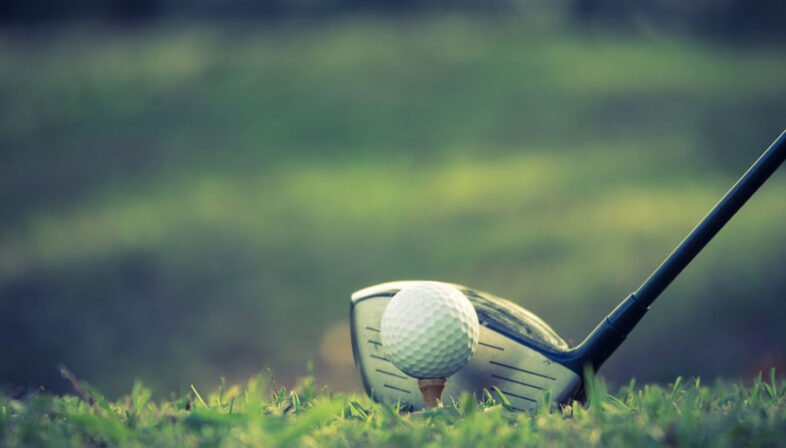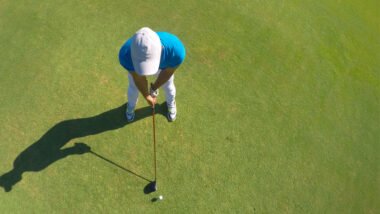Have you ever felt that frustrating moment on the golf course when your ball doesn’t travel straight down the fairway but rather takes a sharp turn to the right? If you’ve been slicing your drives, you may wonder if adjusting your driver to fix a slice is the right solution. Let’s talk about slicing, what it means, and how the adjustments to your driver can help improve your game.
What is a Slice in Golf?
A slice is one of the most common problems golfers face, particularly those who are newer to the game. It occurs when the ball curves dramatically to the right (for right-handed players) during its flight. This happens primarily because of the effect of sidespin caused by an improper swing path or clubface position at impact. Understanding the cause of your slice is the first step in addressing it.
Causes of a Slice
There are several reasons why you might be slicing the ball. Here’s a breakdown to help you identify what could be wrong:
| Cause | Description |
|---|---|
| Open Clubface | If the clubface is angled to the right at impact, it can impart sidespin on the ball, causing it to slice. |
| Outside-In Swing Path | A swing path that comes from outside to inside can lead to a slice as it creates that unwanted horizontal spin. |
| Incorrect Grip | A weak grip (where your hands are rotated too far to the left) can open the clubface at impact, causing a slice. |
| Poor Stance | Positioning your feet and alignment incorrectly can lead to an improper swing plane, exacerbating the slice. |
Recognizing these causes can help you determine the best way to adjust your driver or approach your swing.
Should You Adjust Your Driver?
If you’re slicing your drives, adjusting your driver could be a beneficial move. However, it’s essential to understand exactly how making changes to your equipment affects your overall game.
Driver Adjustments: The Basics
Modern drivers come equipped with adjustability features that allow golfers to tweak various settings to suit their swing characteristics. Here are a few things you might consider:
- Loft Adjustment: Increasing the loft may help reduce sidespin and keep the ball from slicing.
- Face Angle Adjustment: Closing the clubface can help counteract the open face problem and encourage a straighter ball flight.
- Weight Positioning: Many drivers have movable weights that allow you to alter the center of gravity, potentially reducing sidespin and promoting a better launch angle.
When to Adjust Your Driver
If you’ve identified that your slice is primarily caused by issues related to your equipment rather than your swing techniques, it may be time to make adjustments. Here are some guidelines to help you decide:
- Persistent Slicing: If you’ve consistently struggled with slicing over multiple rounds, it might be a sign that your driver isn’t right for you.
- Recent Changes in Swing: If you’ve recently altered your swing technique or grip and find that the slice has worsened, adjusting your driver could help accommodate these changes.
- Feedback from Fitters or Professionals: Getting input from a golf professional about your driver settings can provide valuable insights on how to better match your gear to your swing.
Understanding the Role of Loft
Loft refers to the angle of the clubface, which significantly affects launch factors like height and distance. You might be surprised to hear that making a loft adjustment can aid in correcting a slice.
How Loft Affects Your Slicing
Increasing the loft can help in various ways:
- Higher Launch Angle: By providing a higher launch angle, you can reduce the amount of sidespin imparted on the ball.
- Increased Carry Distance: A better launch angle can translate to longer and straighter shots.
- Improved Ball Trajectory: A higher shot can be less affected by wind, leading to more controlled results.
Loft Adjustment Tips
If you’re considering changing the loft of your driver, here are some tips to take into account:
- Consult with a professional to determine the appropriate loft for your swing speed and style.
- If you decide to increase loft, test your results at the driving range to see if it improves your ball flight.
- Track your shot patterns to ensure that the adjustments lead to beneficial outcomes.
Adjusting the Face Angle
Another critical area to focus on is the face angle of your driver. If you have an open face at impact, it will contribute to that slice we loathe.
Understanding Face Angle
The face angle refers to the position of the clubface concerning the target line at impact. An open face (facing right for right-handed players) will impart rightward spin on the ball, causing it to slice.
Closing the Face Angle
To combat slicing, you may want to explore making adjustments to the face angle:
- Using Adjustable Drivers: Many modern drivers allow you to manually dial in the face angle, so consider closing it slightly if you’re consistently slicing.
- Equipment Testing: Try various angles at the range and take note of which settings yield the straightest drives.
- Replicating Aim: Sometimes, the slicing is more due to an open clubface than the swing, so practicing your aim with the adjusted face angle can help too.
Playing with Club Weight
Weight distribution within the driver can significantly influence your ball flight. By altering the positioning of the weights, you can adjust how the club performs.
Weight Adjustments for Slicing
If your driver is adjustable, you might find that moving the weight towards the heel of the club can help:
- Increased Stability: Placing weight towards the heel helps square the clubface at impact, which can promote a straighter shot.
- Reduced Sidespin: Weight placed in the heel area counteracts the tendency for the toe of the club to lift, which helps minimize that slice.
Practical Tips for Weight Adjustments
Here are a few suggestions on how to approach driver weight adjustments:
- Test different weight configurations at the range to figure out which delivers the best results.
- Consult with a club fitter who can guide you in the right direction based on your swing characteristics.
- Consider using the same settings during practice rounds to solidify any positive changes you make.
Swing Technique Factors
While adjusting your driver can have a significant impact, improving your swing mechanics remains crucial.
Perfecting the Grip
Your grip can play a pivotal role in determining how well you control the clubface. A inadequate grip can lead to an open clubface at impact, reinforcing that annoying slice.
Tips for a Better Grip
- Hold Items: Check if your grip feels too weak or strong. A neutral grip often helps square the clubface effectively.
- Grip Pressure: You want your grip pressure to be firm but relaxed. Tension in your hands can lead to inconsistency.
- Regular Checks: Take time to evaluate and adjust your grip during practice or before a round.
Refining Your Swing Path
An outside-in swing path is a primary culprit of slicing. Your strategy should revolve around optimizing your swing path.
Swing Path Tips
- Incorporate Drills: Consider employing drills that encourage an inside-to-out path, such as the “gate drill” to help with path alignment.
- Use Video Analysis: Recording your swing can reveal potential path flaws. Visualizing your swing could lead you to necessary adjustments.
- Seek Professional Help: If possible, working with a golf instructor can provide personalized tips and modify your swing approaches.
Mental Game Implications
Don’t overlook how mental strength can affect your performance. The frustration from slicing can lead to tension, which may further cloud your judgment on the course. Addressing the psychological aspect of your game is just as important as any technical adjustments.
Building Confidence
Understanding your slice and effectively adjusting your driver can boost your confidence on the course. Here are methods to foster a positive mindset:
- Stay Patient: Improvement takes time; celebrating small successes can keep morale high.
- Positive Visualization: Envision your best shots before you swing. Positive imagery can often lead to better performance.
- Practice Mindfulness: Techniques like deep breathing can help mitigate anxiety as you prepare for each shot.
Creating a Routine
Having a pre-shot routine can help alleviate nerves and instill focus. Here’s how to develop a solid routine:
- Set Up Consistency: Always follow the same steps before every shot, whether it’s a driver or a putt.
- Visualize the Shot: Take a few moments to picture the flight of the ball before you address it.
- Execute with Confidence: Commit to your swing once you’ve gone through your routine; trust your preparation.
Conclusion
Certainly, adjusting your driver in response to slicing can lead to improved outcomes on the course. However, it’s vital to recognize that equipment adjustments are just one piece of the puzzle. Combining your approach with swing improvements and a solid mental game can make all the difference in overcoming that pesky slice.
By focusing on all aspects—from driver settings to grip and swing technique—you’ll be better equipped to attain straighter and longer drives. Remember, golf is a journey; every round is an opportunity to learn and improve. Your goal should be progress rather than perfection, and with diligence, you can turn those slicing frustrations into driving successes.







